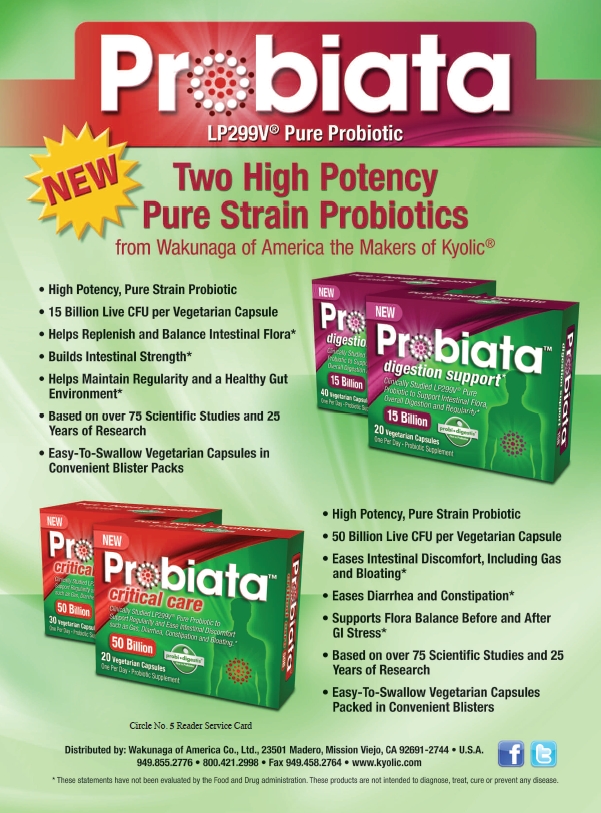A revolution is underway at cafeterias across the nation. Part of it is stemming from disgruntled kids who aren’t thrilled with their ho-hum plates of spaghetti. But, school administrators are also ready to launch their meatballs at lawmakers who tasked schools with making lunches healthier—a job that schools say is next to impossible to accomplish while still making meals appealing. In the end, could it be young natural products retailers who are saving the day for schoolchildren across the nation?
Picture Protest
In 2010, the U.S. Department of Agriculture (USDA) created the Healthy Hunger-Free Kids Act to reform school lunch and breakfast programs. Among many, one goal was to combat childhood obesity  by forcing schools to offer meals with more whole grains, fruits and vegetables, and less sodium and sugar. Schools that didn’t comply would feel it where it hurts with lost subsidies for their lunch programs.
by forcing schools to offer meals with more whole grains, fruits and vegetables, and less sodium and sugar. Schools that didn’t comply would feel it where it hurts with lost subsidies for their lunch programs.
But by late 2012, USDA relaxed some of its rules and now, schools want the USDA to roll back the guidelines completely. Why? Students just can’t adjust to low-sodium and vegetable-rich meals. Requiring kids to eat a fruit or vegetable at every meal is just unrealistic, schools say. And in the end, both students and schools are suffering.
News reports from schools nationwide are telling the same story. Kids are simply throwing away the portions of their lunches that are healthy. Some choose to just drink their milk, resulting in growling stomachs, wasted food and money down the drain. Similarly, cafeterias that encourage kids to choose fruits and veggies on their own—rather than forcing them to take it—are finding students aren’t touching the stuff, even if it means that there’s not much on their plates to eat. It’s been somewhat trendy for kids to photograph their puny meals and tweet them to First Lady Michelle Obama, an outspoken cheerleader for these school meal reforms.

Reaching Out
The entire issue illustrates a larger problem: children today are merely the latest victims of our culture’s unusual way of thinking about food. Kids simply don’t reach for healthier options because it’s outside their eating comfort zone, which is the American value meal of massive, inexpensive and, often, premade processed foods. I found a slideshow of meals prepared for schoolchildren overseas to be very telling. The U.S. school meals were distinctly brown from potato puffs, bread, nuggets and ground beef. The meals in Japan, Finland and other countries were a collage of green, red, orange and brown. These foods are integral to these cultures, and are embraced by both young and old. In the United States, shifting to healthier meals at home and at school with a broad scale of acceptance will take more than some rules made in Washington. Changing America’s food culture to be healthier must take place at the community level, with towns choosing to support a healthy food business over a McDonald’s for lunch.
And, that’s exactly the role many young natural products retailers are  playing in their towns. I recently spoke with several who are making “community center” as much their mission as having a business. These stores are reaching out to their communities in so many creative ways, and it’s heartwarming to see that their efforts are especially appealing to youngsters who are filling the aisles alongside their parents as they slurp their organic smoothies.
playing in their towns. I recently spoke with several who are making “community center” as much their mission as having a business. These stores are reaching out to their communities in so many creative ways, and it’s heartwarming to see that their efforts are especially appealing to youngsters who are filling the aisles alongside their parents as they slurp their organic smoothies.
This is part of our industry’s future, and surely it will be a beautiful tomorrow as young retailers rejuvenate our market—and our towns—with truly the best that the earth has to offer. WF
Kaylynn Chiarello-Ebner
Editor/Associate Publisher
Red Yeast Rice Update
An astute reader correctly pointed out that my explanation of how red yeast rice supplements are regulated in my April editorial needed some refining. The truth of the matter is that red yeast rice, manufactured in the traditional way, naturally contains trace amounts of lovastatin, which is also the active ingredient in statin drugs. FDA allows this compound in legitimate dietary supplements, provided only a trace amount exists. Larger quantities move products into the drug category. To say that it is unlawful to sell supplements containing any lovastatin is incorrect. The amended editorial can be read at: www.wholefoodsmagazine.com/columns/editorial/smoke-and-mirrors.
Published in WholeFoods Magazine, June 2014










